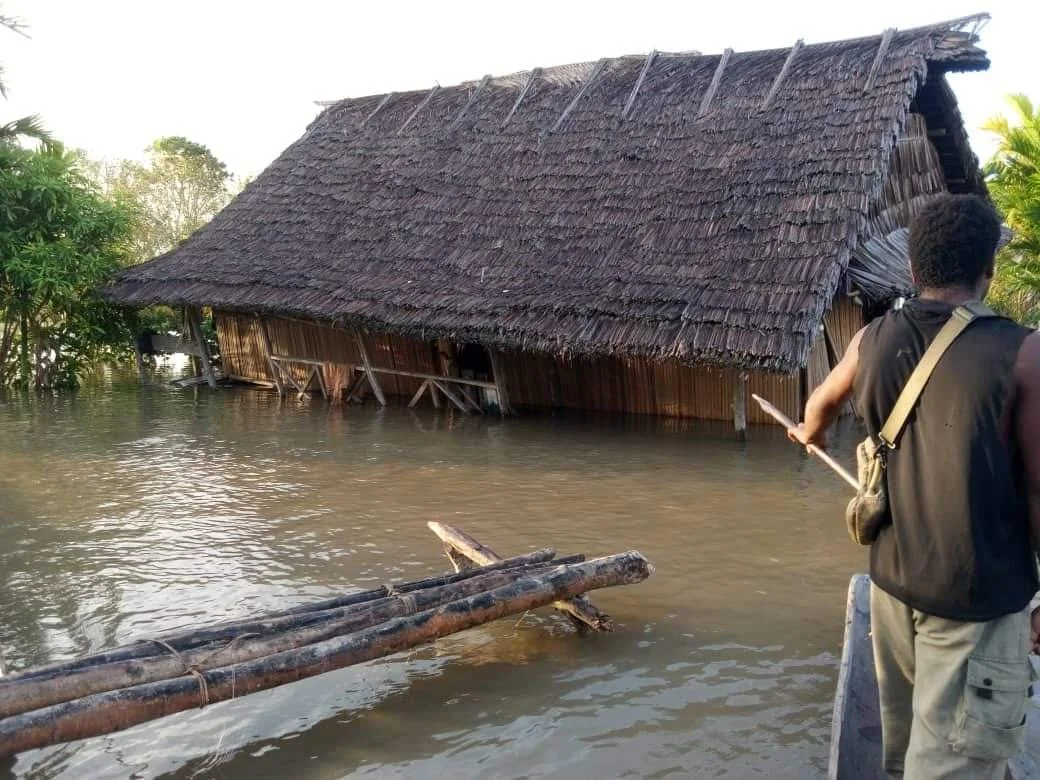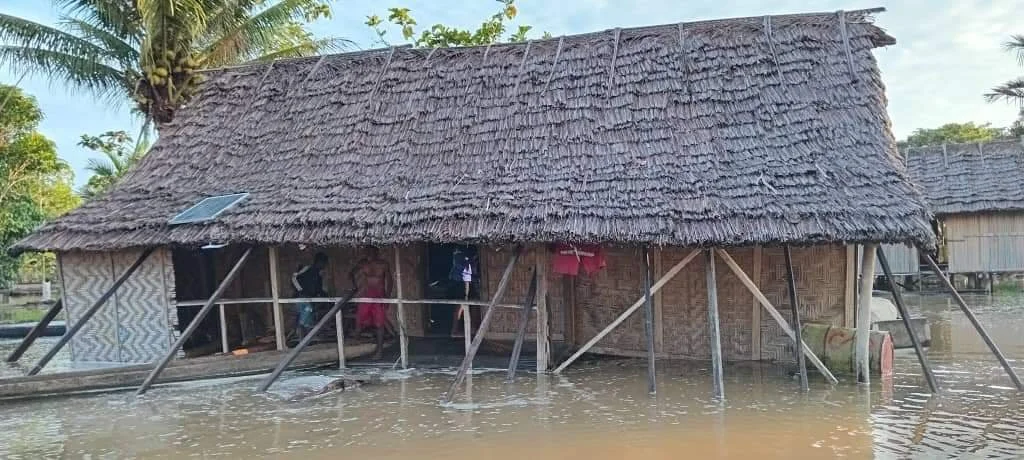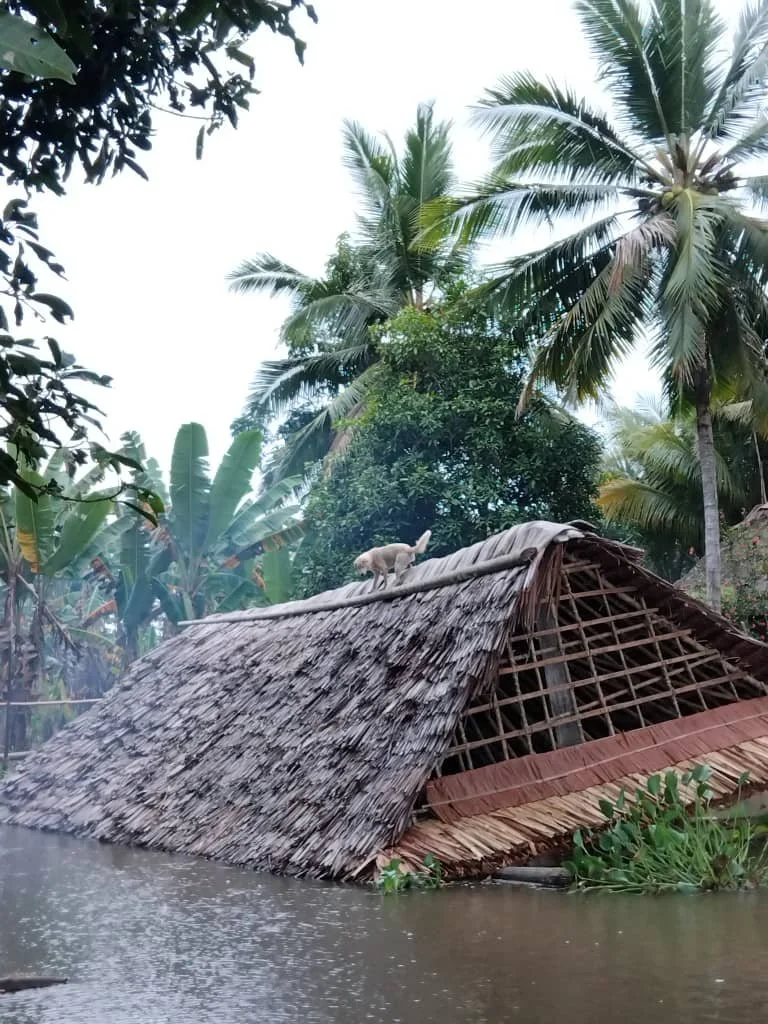FETPNG Graduates Support Response in East Sepik Province After Devastating Earthquake & Flooding
Written by Patrick Tappouras with Stanley Masi & Julianne Gumbat - May 8, 2024
Homes damaged in floodwaters accross East Sepik Province (Supplied: Julianne Gumbat)
On March 24th, 2024, a magnitude 6.9 earthquake struck East Sepik Province, Papua New Guinea. This disaster followed just a few weeks after major flooding in the region, creating a complex and dangerous situation. Several villages were significantly impacted by the combined effects of the earthquake and flooding.
FETPNG Graduates Respond
Three graduates of the Field Epidemiology Training Program of Papua New Guinea (FETPNG) played crucial roles in the disaster response:
Julianne Gumbat: Led the Rapid Response Team (RRT) for the Ambunti district.
Stanley Masi: Led the RRT for the Wosera Gawi District.
Margret Morisause: Led the RRT for the Angoram District.
FETPNG Graduate; Stanley Masi
FETPNG Graduate; Julianne Gumbat
FETPNG Graduate; Margret Morisause
RRT Activities in Disaster Response
The RRTs consisted of multi-disciplinary teams who conducted rapid needs assessments, implemented enhanced surveillance, and supported the development of situation reports to provide updates on the response.
The FETPNG graduates assessed the damage throughout East Sepik (Supplied: Julianne Gumbat)
FETP Skills in Action
Julianne highlighted several FETP skills that proved invaluable in the response. Utilizing the monitoring and evaluation matrix from the intermediate FETPNG curricula the team were able to articulate the main objectives of the response, identify key activities, output and outcome indicators and develop a realistic budget for the response. They applied their data analysis and reporting skills to develop linelists, analyse data, prepare situation reports, and make recommendations to guide response efforts.
Stanley likewise highlighted several FETP skills that helped throughout the response, including formulating a linelist, analysing data, conducting enhanced surveillance in affected communities, using a communications plan, ensuring ethical conduct during the fieldwork and using a One Health approach in the response.
Disaster Assessment Report (Supplied: Julianne Gumbat)
Main Health Risks Identified
The rapid response teams identified several key health risks following the floods and earthquakes. Key areas of focus, as documented in their disaster assessment reports included:
Waterborne diseases: Contaminated drinking water due to dead plants, fish, and overflowing toilets is a major concern. Increasing cases of diarrhoea were reported during the rapid needs assessment.
Skin infections: Sores and potential ulcers are developing, possibly due to contaminated water or poor hygiene.
Yaws: Increased cases of Yaws were reported at health facilities. Yaws is a bacterial skin infection.
Malaria: With stagnant water and potential disruption to mosquito nets, there was increased risk of malaria outbreaks
Respiratory illnesses: Transmission of respiratory illnesses was considered a risk with displaced populations living in close proximity and sharing temporary accommodation.
Pregnant women and disabled people: These groups are identified as particularly vulnerable to health risks resulting from the disaster.
The disruption to healthcare services due to flooded facilities and lack of supplies further exacerbated the health risks.
Assessing the damage (Supplied: Stanley Masi)
Key Recommendations Made
As part of the assessments conducted during the response by the Rapid Response teams, several recommendations were made to Provincial Health Authority as part of their Situational Assessment reports. These included:
Immediate/Short term:
Water purification kits, water containers, large water tanks
Tent/canvas supply
Food distribution
Distribution of bedding, mosquito nets, clothing, cooking utensils
Community awareness campaigns (prevention of waterborne diseases, health and hygiene, nutrition)
Equip all health facilities with essential medical drugs and consumables.
Sending mobile medical teams to affected areas
Food security monitoring
Psychological support services
Long term / Ongoing:
Ongoing surveillance and water sampling
Capacity building: Supporting the Departments of Education and Health to coordinate long-term interventions:
Addressing the negative impact of the flood on the education system.
Implementing sustainable health and hygiene programs
Advocacy for infrastructure rehabilitation
Disaster preparedness awareness and education at the community level for future disasters.
One Health Frontline training for health care works and other partners
Activate district emergency operations centre.
Seedlings for replanting
Tools & Equipment for rebuilding
Conclusion
It is encouraging to see the skills taught during FETP being applied by fellows in the response to a complex natural disaster. The Rapid Response Teams in the three affected districts were all led by FETP graduates. Their selection as team leads is a direct result of their FETP training. The efforts of the FETP graduates helped protect their communities in the aftermath of this devastating combined disaster.
Field Epidemiology in Action is working with the National Department of Health in Papua New Guinea, WHO PNG, and the Global Outbreak Alert and Response Network on strengthening the operationalization of rapid response teams in PNG.
About Field Epi in Action










